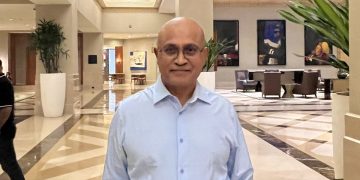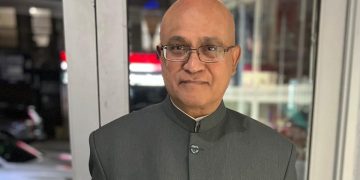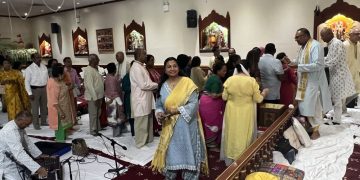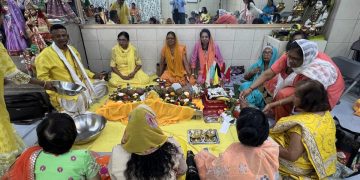Sanatanists are the dominant Hindu group in Trinidad and Tobago, Guyana, and Suriname in the Caribbean. However, their numbers are declining because of several reasons, among them poverty and more importantly a lack of knowledge of their religion and civilizational history.
Why is this so? It is because our Hindu leaders have ignored the concept of sampradaya or denomination. A Sanatanist is a confused Hindu because he is driven to worship a galaxy of deities: Shiva, Krishna, Rama, Durga, Lakshmi, Ganesh, Dattatreya, Hanuman, Saraswati, and the list goes on. He is not told that the experience of divinity can be had by worshipping only one deity. For example, a devotee of Shiva can have a spiritual awakening by reading the Shiva Puran which contains detailed stories of Lord Siva, his consort Parvati, and his sons Ganesh and Kartikeya, repeating Om Namah Shivaya and making oblation to the Shiv lingam.
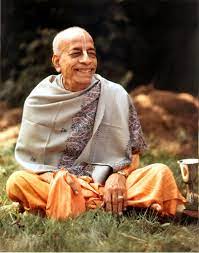 Sanjeev and his wife Mala are celebrating their first wedding anniversary with five poojas to five deities in a single day. Is this necessary for them to do? As a family, they may have a family deity and as individuals they are supposed to have an Esh devata or personal god.
Sanjeev and his wife Mala are celebrating their first wedding anniversary with five poojas to five deities in a single day. Is this necessary for them to do? As a family, they may have a family deity and as individuals they are supposed to have an Esh devata or personal god.
If Sanjeev’s personal deity is Shiva, then it is adequate for him to do a Shiva Pooja and plant a jhandi associated with Lord Shiva. But with five deities being worshipped in one pooja, Sanjeev would just be performing mindless rituals without any knowledge. And if he were to be asked what he had learned about any of the five deities he would be blank.
The devotees ISKCON (Hare Rama Hare Krishna) are not members of a cult but a denomination. Their central focus of worship is Lord Krishna. They take their knowledge from the Bhagavad Gita and the Shrimad Bhagavatam, and their place of pilgrimage is Vrindavan. Their chant or ‘road march’ is the Maha Mantra- Hare Rama, Hare Rama’, and their motto is simple living and high thinking. The cow is held sacred, and they eat a vegetarian meal.
Examples of Sampradayas in Trinidad are the Sai Baba movement, Dattatreya Yoga Center, and the Radha Madhav Society. When the devotees of anyone of these sampradayas meet they are usually on the same page. They have standardized their worship – bhajans and chants and in the case of the Sai organization a discourse by Sai Baba is read. The aspiration of all Sai devotees is to visit Prashanti Nilayam. They have also made seva or service a central pillar of their worship.
Have you been to Satsangh with the Radha Govind Society? They sing bhajans dedicated to Krishna and Radha and talk about their exploits. They also recollect the life of their founding Guru, Sri Kripalu Maharaj. The devotees also engage in seva among the less fortunate in society across race and creed.
Until the 1980s Sanatanist families had one pooja for the year. Today, many have none because they are confused and lost, making themselves vulnerable to conversion. With the continuous migration away from the dharma, the income of the pandits, mahapathars, naw, pooja shops and all associated with the dharma is declining.
Hindus are good for all society. Where there are Hindus there is a striving economy, strong family life and law and order. By not streamlining Hindu thoughts, philosophy, and practices both Hinduism and the Hindu community are made vulnerable to social predators-proselytizers and propagators of anti-social behaviors. Can this scourge be arrested? I think that with the right leadership this setback can be reversed. We have done it in the past and we can do it again.














